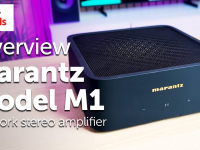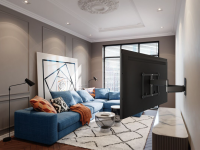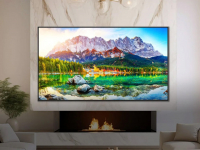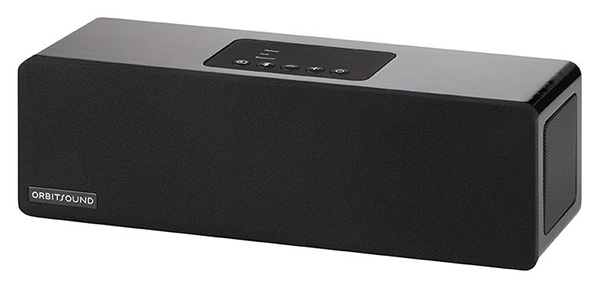
Orbitsound: Hearing is believing…
When I came to unboxing the Orbitsound M9LX one thing crossed my mind: Where on earth was the rest of it? Have I picked up the wrong box? The M9LX is more a sound “brick” than a soundbar. Measuring a stunningly dinky 30cm in length, and a paltry 10cm in height and depth, along with its diminutive subwoofer, I was fairly convinced that I’d just accidentally opened a speaker dock rather than the subject of today’s review.
This all left me feeling a tad sceptical. A good soundbar needs to be able to offer a deep, wide soundstage, diving well beyond the borders of the adjoining TV’s screen, and creating an impression of scope that modern television sets are unable to deliver. Was this little thing supposed to be able to match the theatrics of a big television? Was it even possible?
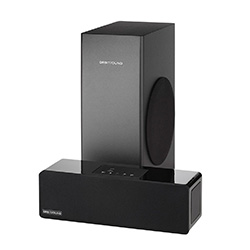
Orbitsound – M9LX
Despite it’s diminutive stature, the M9LX packs four drive units into it’s gloss black shell. Two of these are forward firing, and are responsible for your dialogue and detail, and two are built into opposing ends either side of the bar to increase soundstage width. Using propietary technology that Orbitsound call Spatial Sound Technology (SST) the drivers are designed to bounce sound off walls in the room, and thus creating a surround sound-type effect. Higher end Yamaha’s do this to great effect, and it was nice to see it implemented on a far less costly product (albeit to a lesser extent).
Bluetooth is once again included, and it’s always a welcome feature. Other than that, we’ve got an optical input for connectivity to most TVs, and a set of RCAs with a 3.5mm rounding off the group. These last two inputs mean that plugging in an older phone, MP3 player or even CD player, is possible.
The included subwoofer is a tall and narrow black box that won’t win any prizes for its looks – but that’s par for the course with subs in general. In order to keep the price low, the subwoofer is wired rather than wireless, but the included cables are nice and thin, thus are easy to hide.
Firing up our Blu-ray player and picking demo room favourite Star Trek: Into Darkness, the opening scene set out straight away what we could expect from this little wonder. The soundstage on offer was immense for such a small box. The chirping and whooping of alien entities that we hear so well on our 5.1 setup was kept in-tact, as its cacophony builds into an early chase scene. Dialogue was clear and detailed, but also warm and textured and the subwoofer and soundbar sounded extremely cohesive. Soundbars can sometimes fall short here, with all the midrange sucked out, and a shouty top end mixing badly with boomy bass. The Orbitsound handled the scene (and others) with aplomb, offering a wholly natural performance.
Switching to off-air feeds from Sky, daytime TV fared well here too. The ability to directly influence bass and treble meant that we didn’t need have to have the sub blaring when trying to watch the generic antique programme, but we still got a well rounded sound. It was certainly sounding much heftier than its physique implied.
The Bluetooth input was quick to find the iPhone 4s and the bass-heavy cuts from Thom Yorke’s latest solo project were employed to really put the M9LX to work. The sound again was natural, with bass punchy and taut rather than bloated, and Yorke’s often cloudy-sounding vocals offered up clear and true. Likewise, internet radio played directly from TuneIn was sounding great, and a little tweak of the bass and treble made even the lowliest of stations listenable.
It was difficult to really pin anything negative on the M9LX at all. Certainly taking cost into consideration, its shortcoming were microscopic – quite apt considering its size! The soundstage was narrower than much more expensive soundbars – but not by a huge amount. If you closed your eyes and listened, you’d never have guessed the size of the bar in front of you!
If size is a consideration, or heck, even if it isn’t, I’d very much recommend an audition of this wonderful little box of tricks. Highly recommended!
Author – Chris, Liverpool store



